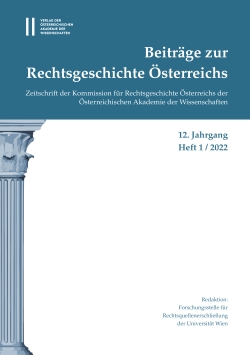
Beiträge zur Rechtsgeschichte Österreichs 12. Jahrgang Heft 1/2022, pp. 78-95, 2022/03/28
The late Middle Ages are often referred to as the ‘age of pledges’ (‘Verpfändungszeitalter’). Given the importance ofthe pledge for the life of noble society, it is only understandable why this legal institution attracted and still attractsthe attention of so many scholars across Europe. By contrast, the pledge policy pursued by Henry of Carinthia inTyrol between 1295 and 1335 has always been a more‐or‐less neglected topic. However, Henry was constantly onthe lookout for money and, throughout his life, surrounded himself with pledgees. This paper thus intends to describevarious legal aspects of these pledge relationships. The analysis of the pledge contracts registered in the Innsbruckmanuscript IC 18 should eventually result in a new view of the personality of Henry of Carinthia, blamed byhistorians for squandering the fortune inherited from his father, the great Menhart II.
Keywords: Henry of Carinthia;Middle Ages;pledges;practice of government;Tyrol